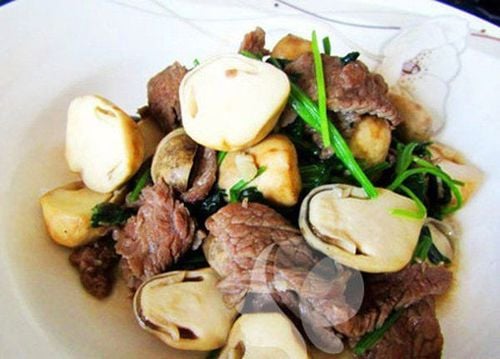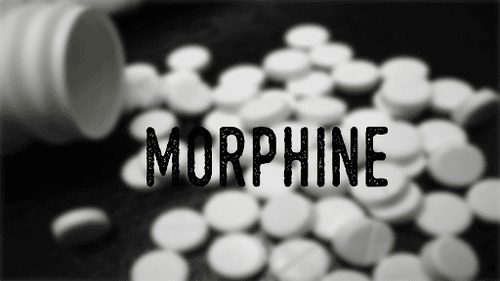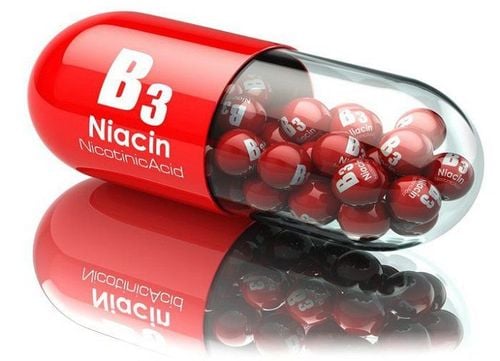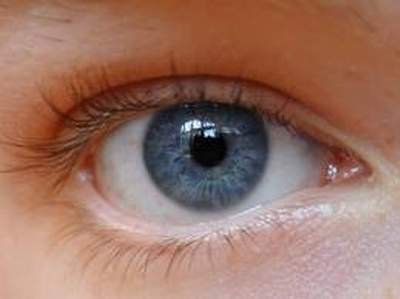This is an automatically translated article.
Mushrooms are a nutritious food that is used to prepare many delicious dishes. Dishes from mushrooms are always popular, but they are concerned that buying unclean and poor quality straw mushrooms will adversely affect the health of their families. So, how are straw mushrooms grown and cared for to ensure safety for health? The following article is how to grow and care for straw mushrooms.1. Choose straw materials and process straw to grow mushrooms to ensure safety for health
Choose straw:Choose dry, clean, bright yellow straw; Straw is not moldy, waterproof, mushy; no chemicals, pesticides to ensure fresh and clean straw mushrooms. Should use sticky rice to ensure the best quality, use straw that has been stored after one season. Straw treatment: The purpose of killing fungus, cleaning alum, salt in rice straw ensures clean straw fungus, safe for health.
Step 1: Mix lime water: Lime water used to treat straw has a pH of about 12-13 (3.5kg lime in 1000 liters of water).
How to do:
Weigh lime into a clean bowl (can use slaked lime or quicklime), the amount of lime depends on the amount of straw treated. Stir until the lime is completely dissolved in the water. Pour lime water into the straw soaking tank and add clean water to the tank, stir the lime water solution until completely dissolved. Check the pH of lime water with pH paper. Step 2: Wet the straw with lime water
Weigh the amount of straw for 1 treatment (minimum 300kg)
How to do it:
Slowly put each bunch of straw into the lime water tank Press the straw in lime water, time 10 - 15 minutes for the straw to absorb enough water Picking up the straw to let the straw drain (time 3 - 5 minutes) Check the straw before composting: The moisture content of the straw is 70-75%, the straw is bright yellow, fragrant concentration of lime.
Step 3: Incubate the straw
In the first time, after stacking 2-3 days, turn the straw once. If the straw is too wet, reduce the outside cover. If the straw is dry, it is necessary to add lime water at the rate of 3kg of lime per 100 liters of water, watering just enough.
On the 5-6th day check the straw again. Straw is wet enough, when squeezed a few stalks see a few drops of water is best.
Step 4: Loosen the straw
After incubating the second straw for about 3-4 days (depending on the straw material). Can last 9-12 days depending on the firmness of the straw. Then we loosen the straw, let it cool:
Loosen the straw from the compost pile (the purpose is to reduce the temperature to about < 35 degrees Celsius). Check straw moisture (make sure from 70-75%) before closing the tissue, transplanting.

Nấm rơm sạch được nhiều bà nội trợ sử dụng trong bữa ăn hàng ngày
2. Choose a Straw Mushroom Varieties
It is an important step that greatly affects the yield of mushroom cultivation. Choosing good varieties, right age, not contaminated with bacteria will give high yield and quality of fresh and clean straw mushrooms.2.1 Selection of straw mushroom varieties Mushrooms of the right age, the mycelium grows to the bottom of the bag; Seed sacs appear sporadically on the surface, pinkish-white or turn fleshy pink; No mold infection such as blue, black, orange spots; Has a characteristic aroma, no sour smell. 2.2 Disinfecting straw mushrooms Using alcohol to disinfect hands and seed containers Tear open the outer plastic bag and break the seed block by hand. Loosen the seeds.
3. Tissue closure and inoculation of straw mushroom
Choose a clean location to close the tissue. Place the mold on the center of the nylon sheet. Put the straw into the mold and use your hands or feet to press the straw to form a block in the mold. Lift the mold out of the mushroom tissue with one hand, with the other hand, firmly compress the mushroom tissue package, avoiding scratching and breaking the mushroom tissue package. The strained mushroom was transplanted into the 4 corners of the mushroom tissue or spread evenly on the 2 sides of the mushroom tissue. Pull the plastic sheet to tightly pack the mushroom tissue. Use nylon rope to tie the mushroom tissue. Transfer the mushroom wrapping tissues and place in the filamentous house.4. Yarn farming
After 3 to 4 days of inoculation, we check the growth of mycelium by the following:Choose any fungal tissue, we proceed to open the mycelium, if the mycelium covers the fungal tissue, the variety will grow well. . If we are afraid of weak growth of fungi, we will check if the humidity and temperature in the mushroom tissue are appropriate. Then we make adjustments. Then proceed to reverse the inner tissue packages to the outside and the outer packages to move inwards. The time of growing yarn is about 7-9 days, we proceed to open the plastic bags and put them in the grow house and stack them on the shelves.
5. How to care for and harvest straw mushrooms to ensure safety for health
5.1 Care of straw mushrooms On each shelf, we arrange 3 layers of mushroom tissue. Open the ventilation door for mushroom growing house twice a day, 30 minutes each time. Maintain room temperature between 28-32 degrees Celsius. Keep the relative humidity of the air in the mushroom growing house always between 80-90% by spraying water on the air, on the wall, and flushing the ground. After 2 days, we proceed to spray mist on the fungal tissues, must irrigate the right amount and at the right time. + Too much water will cause anaerobic conditions that kill the mycelium during the growth period and the death of fruit bodies during the development period. Lack of water mycelium will stop growing and not form fruiting bodies, large fungal fruit bodies will shrivel or slow down. Watering while the fungus is in full bloom will wash away nutrients and affect the growth of fruit bodies.+ Watering at the right time is the best time to water the fruiting bodies 1-2 days before or after the spike-shaped fruits appear. Such irrigation provides the right moisture at the right time for the formation and growth of fruiting bodies. The amount of irrigation water is gradually reduced in the following seasons because the decomposed organic matter also produces water.
The light in the mushroom growing house is adjusted so that it is evenly distributed. The surface of the fungal tissue receives light everywhere. If natural light is not guaranteed, artificial lighting can be used. The most suitable lighting period starts from the time of watering to welcome the fruiting bodies to the end of the spherical stage. 5.2 Harvesting Straw Mushrooms From the time the mushrooms sprout the pins until the mushrooms develop into mature fruit, about 3-4 days. When the mushroom fruit reaches the ovoid stage, this is the time when the mushroom with the highest nutritional value is harvested.
Note that straw mushrooms are picked in a whole cluster, in a cluster of mushrooms with more than half of the mature mushrooms, we pick them, gently rotate the mushroom cluster with one hand, lightly pressing on the surface near the place where the mushroom cluster is picked to avoid damage. injury to other fungal clusters. When the mushroom cluster falls out of the mushroom tissue, it is necessary to clean the mushroom foot to avoid disease to ensure that the mushroom is fresh and clean. Do not water immediately after picking mushrooms. Mushrooms are collected if traveling far away, so they should be picked in the form of a sphere.
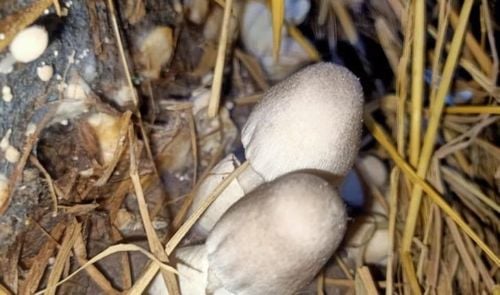
Thu hoạch nấm cần có kỹ thuật để đảm bảo nấm rơm tươi, sạch
6. Nutritional value of straw mushrooms
Straw mushrooms are nutritious mushrooms. Straw mushrooms contain many vitamins A, B1, B2, PP, D, E, C and contain 7 kinds of amino acids. In 100g of fresh straw mushroom contains 90% water, 3.6% protein, 0.3% fat, 3.2% sugar, 1.1% fiber (cellulose), 0.8% ash, 28mg% Ca, 80mg% P, 1.2% Fe, vitamins... Every 100g of fresh straw mushrooms provides the body with 31 calories.Fresh straw mushroom is a delicious, nutritious, easy-to-grow, fast-harvesting food. The above article has guided how straw mushrooms are grown and cared for to ensure safety for health? How to grow straw mushrooms is very simple, taking care of straw mushrooms is not difficult, you can also grow straw mushrooms yourself in a basket, at home to have clean straw mushrooms for your family's meals.
Please dial HOTLINE for more information or register for an appointment HERE. Download MyVinmec app to make appointments faster and to manage your bookings easily.




